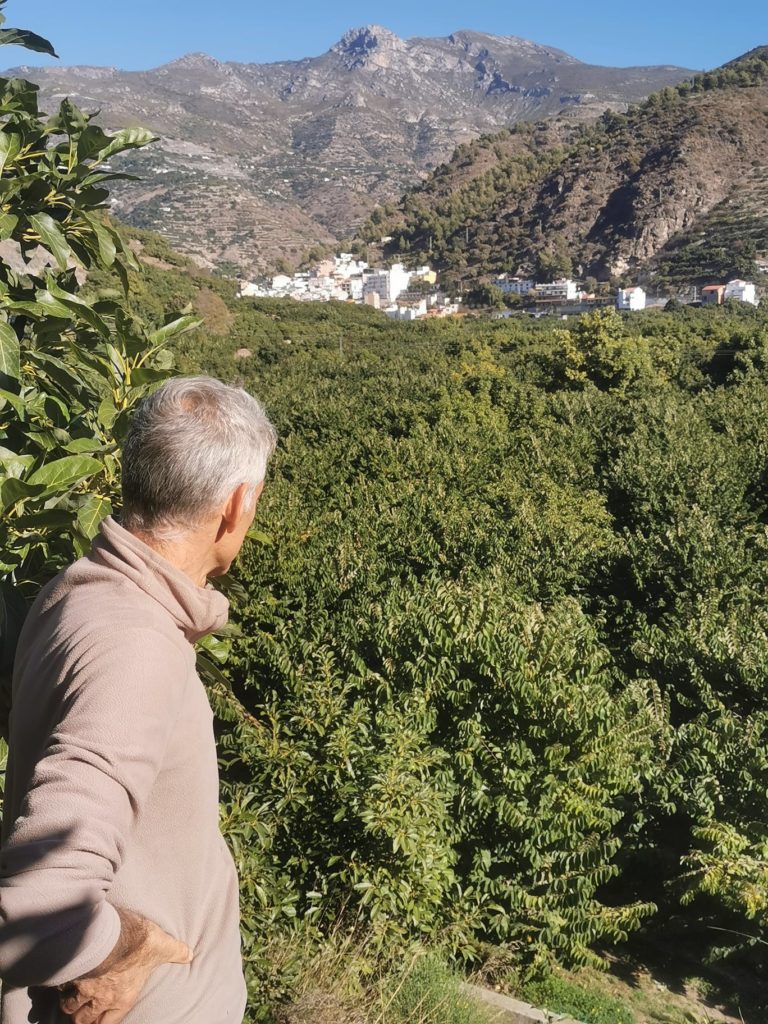Tierra y Libertad visits Jose González at Tropicultura in Jete, province of Granada in Spain. In this video we see the stark difference between his regenerative agricultural techniques and his nieghbours conventional techniques. See immediately the difference between regenerative agriculture that nurtures life and creates abundance, and conventional agriculture which… doesn’t.
Transcript
The water arrives there, gets distributed here, it's distributed in lines. The water flows in that direction, from here down. The man who organises the irrigation, does he do the work? 'El regador?'. Yes. In summer he does it. But in winter, imagine what happens. Normally it starts to rain in October. So in October el regador stops working. So in a normal situation it rains a little in October, a little in November, a little in December, a little in January, in February so you don't have to irrigate. But this year it didn't rain in October, nor in November or December. So in December I had to water once. That I did myself. If it rains then I wont have to do it again. Normally el regador begins working in May or June. And this is the system that your father did? Your grandfather also? Yes, yes. This system has been the same always. Always been like this. Always? Well, not always, not before agriculture of course! But this system has been used for sure since the time of the Muslims here, before I don't know what they did. But from then on they did it like us, this type of irrigation with a 'community of irrigators'. It's like in all peasant societies. There are certain types of communal work that have to be done together. Above all to fix the acequia's [water channels]. Imagine if one breaks up there. One person alone can't do this. And if everybody uses them then everybody has to go [to fix them]. So as everyone uses it, there is a community. There are rules that you have to abide by. Each person has a proportional use of the water [according to land size]. It's a type of commons? Of course. A community we call it. It's something in common, a common good. So you think this ground has been cultivated for more or less 1000 years? It's possible that the Romans cultivated it. The Romans as well? Yeah. Here there was an important Roman settlement in Almuñécar, just here below us. The Phoenicians were already here, but the Romans built the aqueduct which goes from up above us, where now the water for the acequia comes from, it's the same place as the Romans took the water from down to Almuñécar 2000 years ago. There's still a lot of remains from the aqueduct. This area of la vega [irrigated cultivation area] was probably cultivated by the Romans. I'm not sure, I can't promise you. But the Muslims, for sure. But the Romans probably because there was a sizeable population here. So it's possible to have a sustainable agricultural system? That lasts 2000 years? Yes. But what happens? Well, it depends on how you do it....
Confirmed father, alleged farmer, an occasional writer, undoubted if undistinguished linguist, shameless traveller, unreformed poet of the Chinese recluse type.





